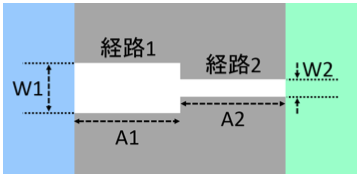
Analysis and Modeling of Steering Behavior of Connected Straight Paths Inproceedings
Shota Yamanaka, Wolfgang Stuerzlinger, Homei Miyashita
Abstract:
The steering law models human motor performance and has been verified to hold for a single linear and/or circular path. Some extensions investigated steering around corners. Yet, little is known about human performance in navigating joined linear paths, i.e., successions of path segments with different widths, although such operations appear in our graphical user interface tasks, including lasso operations in illustration software. In this work, we conducted three experiments involving joined paths. The results showed that users significantly changed their behavior, and that that strategy change can be determined beforehand. A simple model summing the two indexes of difficulty (IDs) for each path was efficient to predict the time (R2 > 0.96), but more sophisticated models were also evaluated. The best model includes the ID of the crossing operation to enter the second path, in terms of both of R2 and AIC values.
